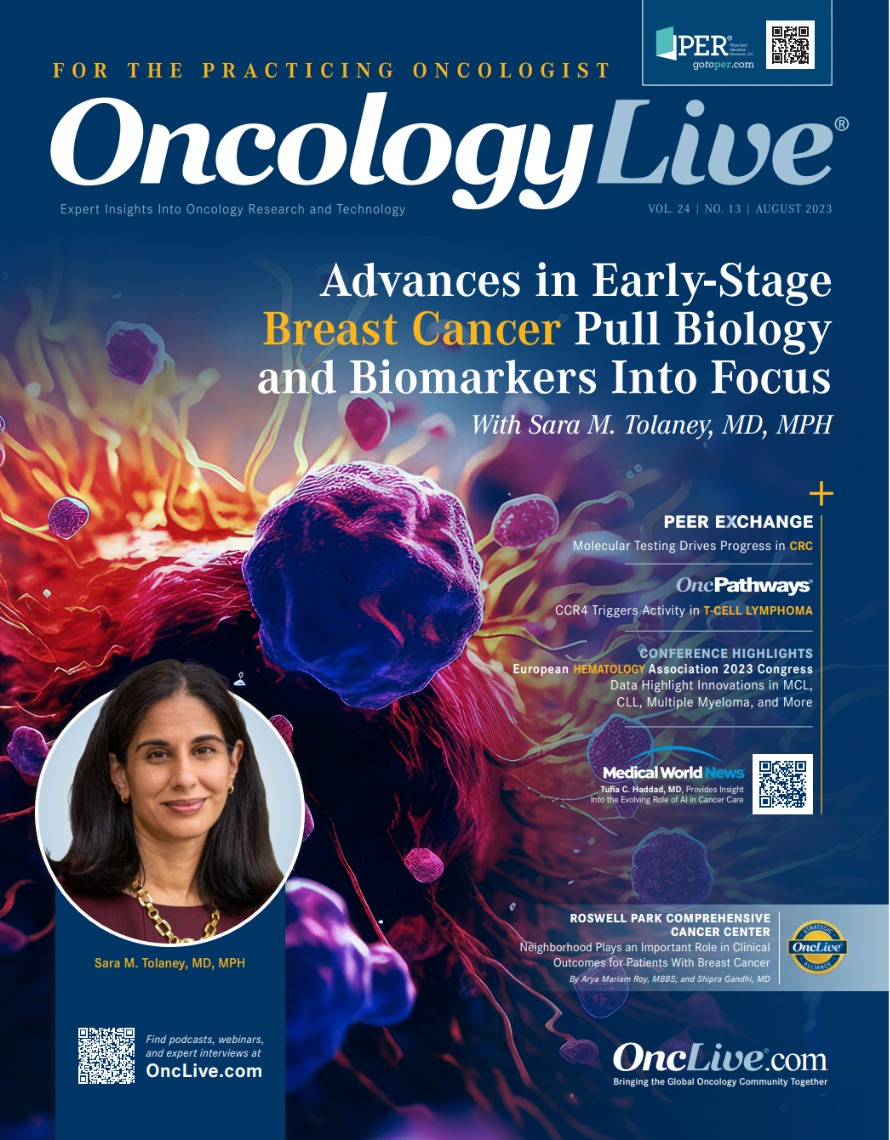Neighborhood Plays an Important Role in Clinical Outcomes for Patients With Breast Cancer
Addressing socioeconomic health disparities has been a crucial objective of health policy in the United States. The relationship between cancer incidence and mortality and socioeconomic status varies across malignancies.
Arya Mariam Roy, MBBS

Addressing socioeconomic health disparities has been a crucial objective of health policy in the United States. The relationship between cancer incidence and mortality and socioeconomic status varies across malignancies.
Risk factors associated with the development and progression of cancer, such as smoking, alcohol use, dietary habits, obesity, lifestyle choices, environmental pollution, and occupational exposure, are directly and indirectly influenced by an individual’s socioeconomic status and where they live. Although existing data indicate a higher incidence of breast cancer among those with higher socioeconomic status, limited information is available regarding the clinical outcomes of breast cancer based on neighborhood socioeconomic status.1
Our research group at Roswell Park Comprehensive Cancer Center sought to clarify these possible connections. What we have found from our analysis of nationwide data underscores how imperative it is for clinicians to examine the relationship between neighborhood socioeconomic status and morbidity and mortality rates of specific malignancies.
Global and Local Disparities
Socioeconomic inequalities in cancer mortality are a global concern. Insufficient resources in areas with lower socioeconomic status contribute to delayed cancer diagnoses and inadequate treatment options, resulting in significant mortality and morbidity.2 Social factors, including income, educational and job opportunities, housing, social support, transportation barriers, and racial disparities also play a significant role in cancer-related mortality. These disparities are particularly pronounced in low- and middle-income countries where access to care and financial toxicity pose challenges for the majority of patients. Because of disparities in socioeconomic factors and developmental infrastructure, areas characterized by low individual and neighborhood socioeconomic status may be associated with poorer prognosis for certain malignancies.
Shipra Gandhi, MD

Breast cancer is the most prevalent form of malignancy among women worldwide.3 Survival rates for patients with breast cancer are influenced by demographic, clinical, and pathologic factors. Additionally, racial and ethnic backgrounds as well as socioeconomic factors have been shown to effect clinical outcomes in breast cancer.4
Using information compiled through the national cancer database, we conducted an analysis to explore the effect of neighborhood deprivation on clinical outcomes in breast cancer. Our findings were based on data from 88,572 patients throughout the US and revealed a higher prevalence of racial and ethnic minorities, particularly among individuals identifying as Black/African American or as Hispanic/Latinx, in areas characterized by greater deprivation compared with those not characterized as deprived. Likewise, the most deprived areas had a higher proportion of uninsured patients.5,6
We observed predominant levels of aggressive subtypes of breast cancer, including HER2-positive and triple-negative breast cancer, as well as advanced disease stages, in the most deprived neighborhoods. Our analyses demonstrate that patients with early-stage breast cancer from areas with greater neighborhood deprivation experienced inferior overall and breast cancer-specific survival rates,5 after adjustment for common confounders effecting survival. Our findings were presented as a Poster Spotlight Discussion at the 2022 San Antonio Breast Cancer Symposium.6
The identification of higher breast cancer stages in areas with the highest levels of deprivation raises concerns about delayed access to screening, insufficient insurance support, and inadequate education and awareness regarding general health among individuals residing in socioeconomically disadvantaged areas. Early detection of breast cancer is associated with improved prognosis, provided that appropriate care is delivered. Although our study results revealed a higher proportion of individuals representing racial and ethnic minorities in economically deprived neighborhoods, the disparity in survival rates persisted even after adjusting for patients’ race, ethnicity, and clinicopathological features. This highlights the significant role that both patients’ socioeconomic status and neighborhood characteristics play in determining breast cancer outcomes.5
Improving Clinical Outcomes
Our study findings have elucidated the critical effect of neighborhood deprivation on survival outcomes of patients with breast cancer. The cumulative impact of various neighborhood factors, such as infrastructure (eg, schools and hospitals), accessibility to nearby health care facilities, availability of healthy food and water, and neighborhood hygiene contributes to this phenomenon. Factors such as prolonged exposure to water and air pollution in underresourced neighborhoods can induce changes in the tumor microenvironment of individuals residing in those areas, potentially leading to the development of aggressive forms of breast cancer.7
Unfavorable neighborhood conditions also can contribute to the emergence of chronic medical comorbidities, fostering an immunosuppressive tumor microenvironment that facilitates the development and progression of breast cancer.8
Our work outlines strategies that can be implemented to effectively address these disparities as follows:
- Enhance coordination among social workers and case managers at hospitals to identify and address barriers preventing patients from underresourced neighborhoods from accessing necessary care.
- Implement government policies aimed at improving basic infrastructure in underresourced neighborhoods.
- Deploy mobile mammography units to reach neighborhoods with limited access to health care, facilitating proper disease screening.
- Provide free transportation services for patients residing in underresourced neighborhoods, ensuring their ability to attend regular appointments, receive treatment, and undergo necessary scans or radiation therapy.
- Provide financial aid and support to patients with breast cancer from the most deprived neighborhoods and their families.
- Implement community-based education and awareness programs in underresourced neighborhoods, focusing on breast cancer prevention, early detection, and the importance of regular screenings. These programs can be conducted in collaboration with local community organizations, schools, and health care providers to ensure widespread dissemination of information and empower individuals with knowledge to make informed decisions about their health.
- Establish partnerships with local businesses and organizations to provide financial incentives and resources for breast cancer screenings and treatment in underresourced neighborhoods. Collaborating with community stakeholders, such as pharmacies, clinics, and charitable organizations, can help alleviate the financial burden associated with screenings and treatments. Such measures can involve offering discounted or subsidized mammograms, treatment medications, and supportive care services, as well as facilitating access to patient assistance programs or grants for individuals from disadvantaged backgrounds.
It is crucial for cancer clinicians to identify patients seeking breast cancer treatment from areas characterized by higher deprivation indices. This key step enables the implementation of strategies aimed at overcoming barriers related to financial status and transportation, thereby facilitating patients’ access to essential care, regular appointments, and vital diagnostic procedures, treatments, and follow-ups. These interventions hold significant potential to improve the clinical outcomes for patients with breast cancer.
References
Singh GK, Jemal A. Socioeconomic and racial/ethnic disparities in cancer mortality, incidence, and survival in the United States, 1950-2014: over six decades of changing patterns and widening inequalities. J Environ Public Health. 2017;2017:2819372. doi:10.1155/2017/2819372
Vaccarella S, Georges D, Bray F, et al. Socioeconomic inequalities in cancer mortality between and within countries in Europe: a population-based study. Lancet Reg Health Eur. 2023;25:100551. doi:10.1016/j.lanepe.2022.100551
Siegel RL, Miller KD, Fuchs HE, Jemal A. Cancer statistics, 2022. CA Cancer J Clin. 2022;72(1):7-33. doi:10.3322/caac.21708
Goel N, Hernandez A, Thompson C, et al. Neighborhood disadvantage and breast cancer-specific survival. JAMA Netw Open. 2023;6(4):e238908. doi:10.1001/jamanetworkopen.2023.8908
Roy AM, George A, Attwood K, et al. Effect of neighborhood deprivation index on breast cancer survival in the United States. Res Sq. Preprint posted online April 7, 2023. doi:10.21203/rs.3.rs-2763010/v1
Roy AM, George A, Attwood K, Gandhi S. Neighborhood deprivation index and survival in breast cancer in the United States. Cancer Res. 2023;83(suppl 5):PD1-04. doi:10.1158/1538-7445.SABCS22-PD1-04
Gearhart-Serna LM, Hoffman K, Devi GR. Environmental quality and invasive breast cancer. Cancer Epidemiol Biomarkers Prev. 2020;29(10):1920-1928. doi:10.1158/1055-9965.EPI-19-1497
Saini G, Ogden A, McCullough LE, Torres M, Rida P, Aneja R. Disadvantaged neighborhoods and racial disparity in breast cancer outcomes: the biological link. Cancer Causes Control. 2019;30(7):677-686. doi:10.1007/s10552-019-01180-4




